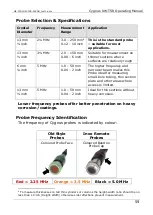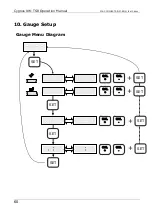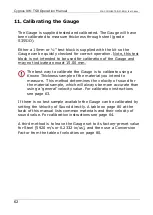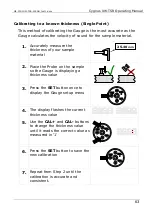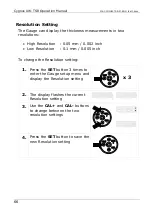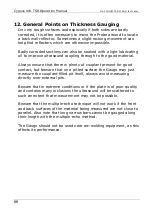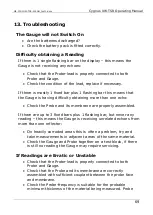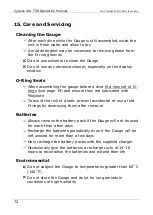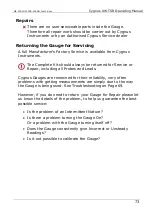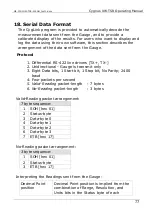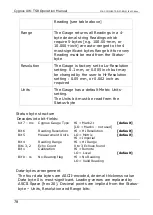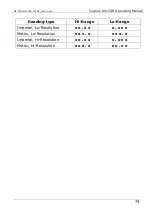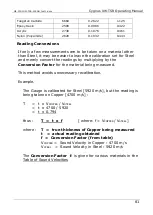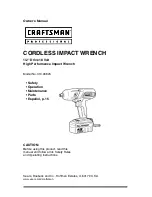
Cygnus UW-TSR Operation Manual
M4-CYG1UW-TSR-M-ENG_Iss11.docx
68
12.
General Points on Thickness Gauging
On very rough surfaces and especially if both sides are badly
corroded, it is often necessary to move the Probe around to locate
a back wall reflector. Sometimes a slight rocking movement can
help find reflectors which are otherwise impossible.
Badly corroded sections can also be soaked with a light lubricating
oil to improve ultrasound coupling through to the good material.
Always ensure that there is plenty of couplant present for good
contact, but beware that on a pitted surface the Gauge may just
measure the couplant-filled pit itself, always avoid measuring
directly over external pits.
Beware that in extreme conditions or if the plate is of poor quality
and contains many inclusions the ultrasound will be scattered to
such an extent that measurement may not be possible.
Beware that the multiple-echo technique will not work if the front
and back surfaces of the material being measured are not close to
parallel. Also note that long narrow bars cannot be gauged along
their length with the multiple-echo method.
The Gauge should not be used near arc-welding equipment, as this
affects its performance.






